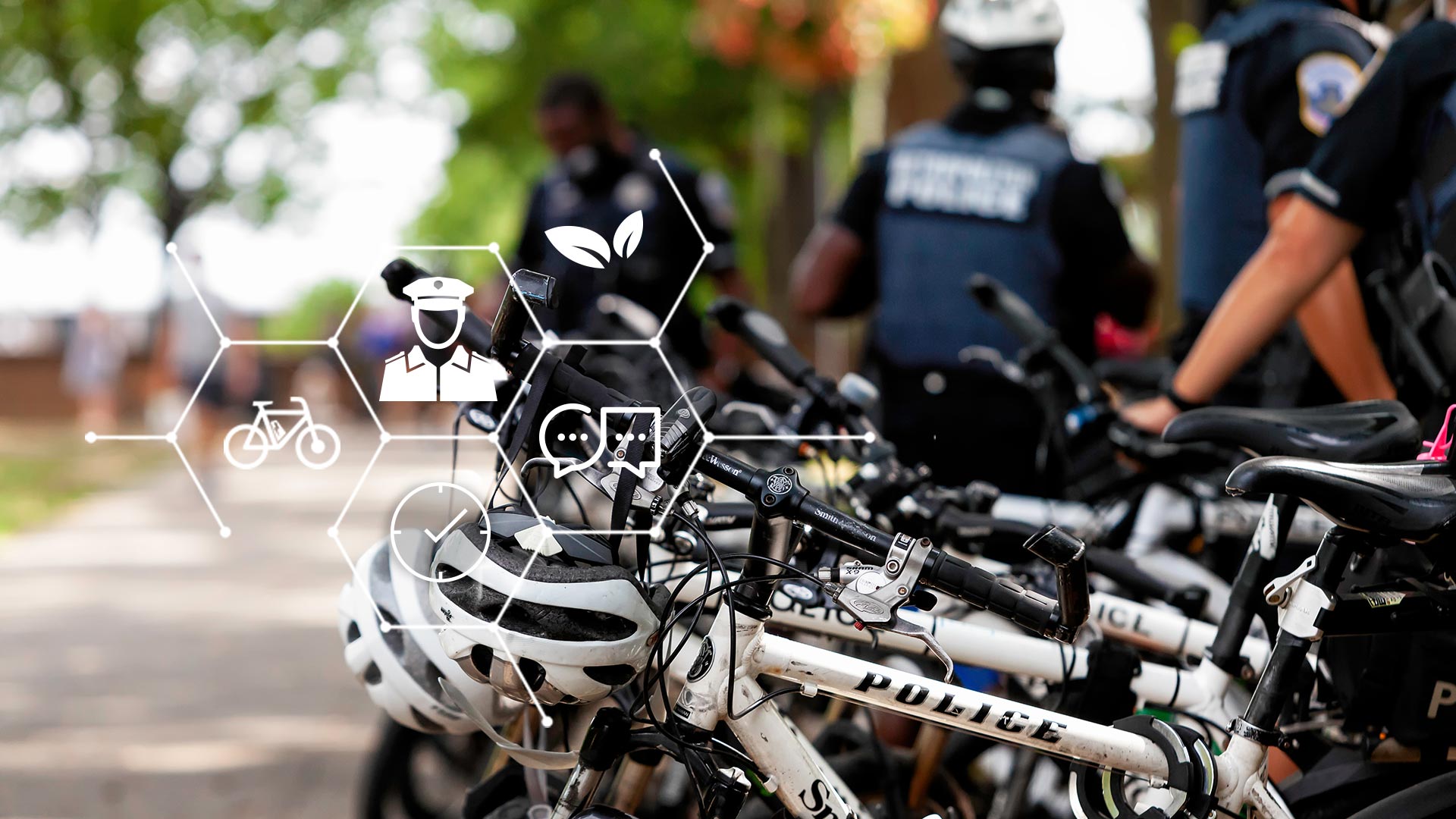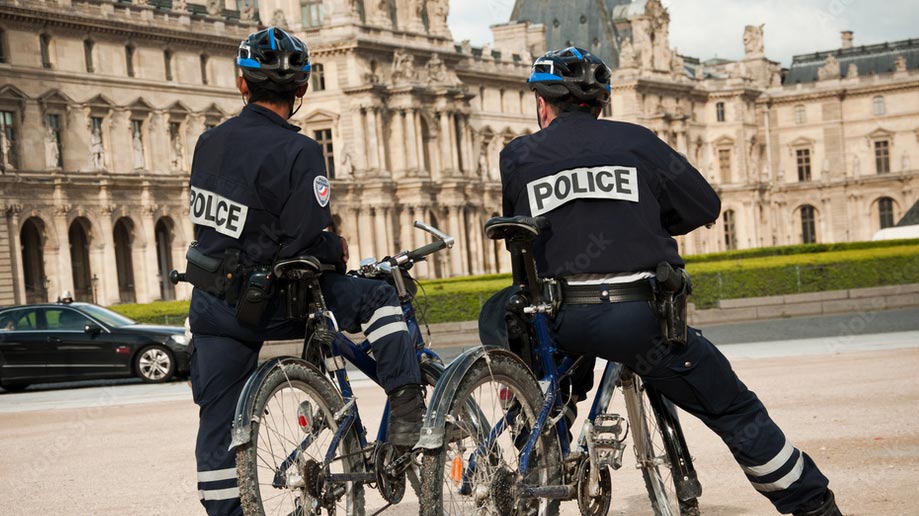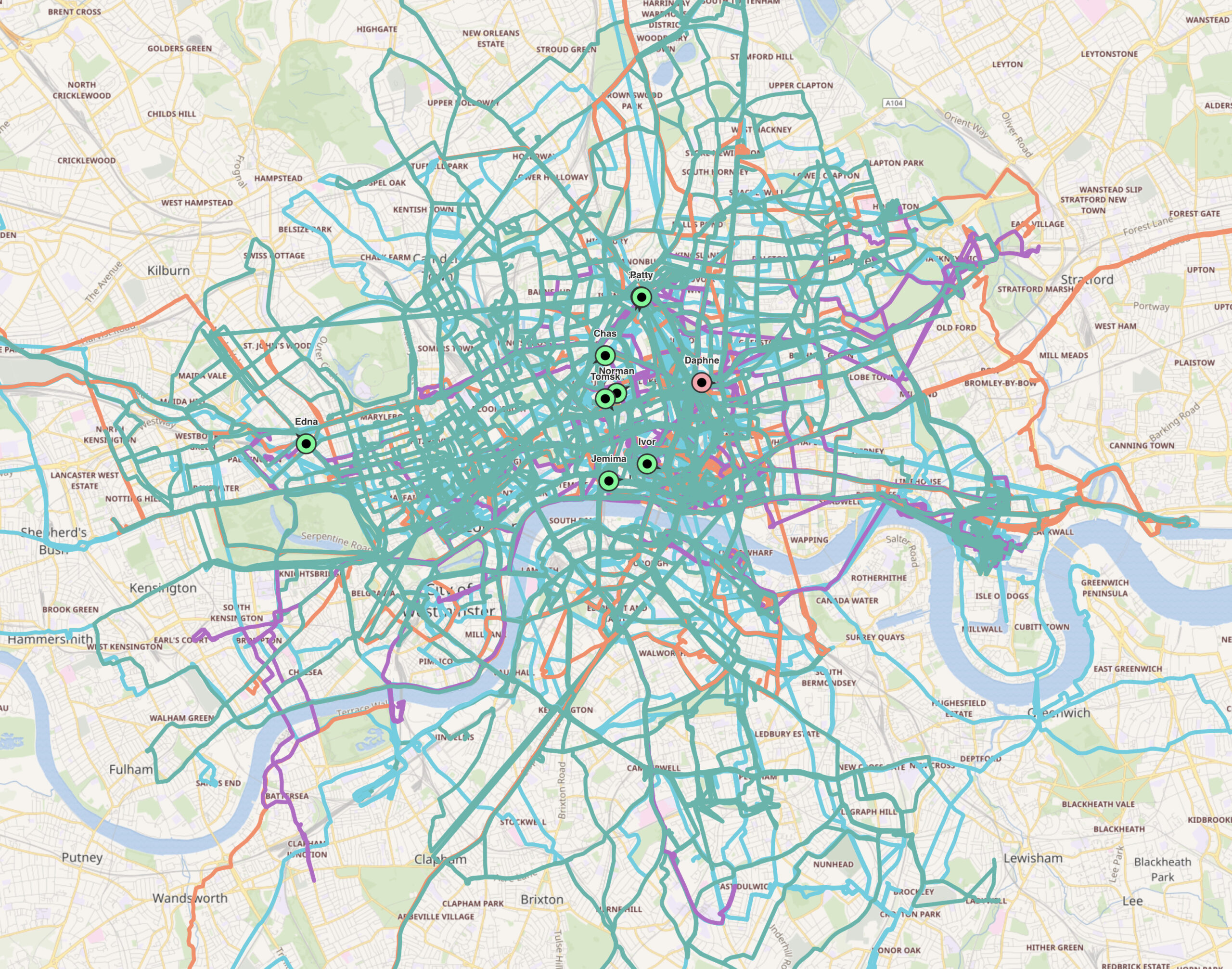- Free shipping from 220€The order of accessories (without BikeTrax) is excluded from the free shipping costs.
Flotten-Special, PowUnity explains, Top, Topics
Electric police bicycle – when a police officer travels by e-bike
Inhalt
E-bike police in a nutshell
- Already more than 100 years ago, police officers often got around on bicycles. Especially in the USA, bicycle cops were widespread. Today, police officers increasingly use e-bikes or the even faster S-pedelecs.
- E-bikes bring several advantages to patrol duty: They are environmentally friendly and allow for fast progress in rush hour as well as in narrow alleys. The electric motor saves power compared to conventional bicycles. In addition, police officers meet other cyclists at eye level.
- However, police officers need special e-bikes. Among other things, they have to be very robust and recognizable as police bikes.
- With integrative GPS tracking solutions such as the PowUnity fleet management system, e-bike fleets can be centrally managed and protected against theft.
In crowded city centres, a car is not necessarily the most practical means of transport. This is especially true for carrying out traffic controls, monitoring demonstrations or pursuing criminals.
For some time now, the police have been responding to this problem by increasing the use of electric bicycle. E-bikes prove to be particularly advantageous thanks to their powerful motor.
Bicycles among the police were already common in the past
At the beginning of the 20th century, police officers on bicycles were common. In 1917, according to one estimate, there were 50,000 in the US alone. “Bicycle cops” proved to be more efficient compared to “regular officers” as they were usually faster and more agile. No wonder that many officers were proud to be part of the “high power e-bikes squad”.
With the arrival of the car, bicycles went out of fashion in the police departments. However, in the 21st century, they have come back – in Europe as well as in the US. And there is one key difference from earlier times: Today, police officers increasingly use electric bicycles or S-pedelecs, which can go up to maximum speed of 45 km/h instead of 25 km/h.
Main tasks of the electric bicycle police
Cops who ride police bikes are regular officers. However, they tend to focus on the following tasks:
- Controlling cyclists and pedestrians
- Enforcing traffic violations
- Patrolling areas that are difficult to access for cars
- Monitoring demonstrations
Advantages of electric bicycles for patrol duty
What are the main reasons for replacing patrol cars or motorcycles with an electric bicycle?
- Environmentally-friendly: In times of climate change, environmentally friendly mobility is more important than ever. Police officers on e-bikes show that the police are setting a good example.
- Mobile: Pedestrian zones, cycle paths or narrow alleys are no longer accessible for a patrol car. But with an electric bike, officers remain more mobile while controlling or pursuing suspects.
- Fast: E-bikes also have the edge in terms of speed in some cases, such as on congested roads in rush hour. This is especially true for S-pedelecs.
- Effort-saving: The motor assistance provides more range. Police officers can conquer steep hills without getting out of breath. Therefore, having an e-bike makes the patrol duty more pleasant.
- Advantageous for interaction: Finally, advocates of bike police also emphasise their psychological advantage. Officials riding bikes meet other cyclists or riders on scooters at eye level without a car window separating them. According to observers, people who are addressed react more understandingly when errors or risks are pointed out to them.
Of course, there are also disadvantages depending on the situation. For example, even an S-pedelec is not suitable for following people in cars, at least if they are not stuck in a traffic jam. In such a case, the colleagues in the patrol car have to take over.
Moreover, it also depends on the weather if it is pleasant to patrol by bike. Further, if it comes to dangerous interactions between officers and a suspect, a car is more safety than a bike.
Where the police are on the road on (S-)pedelecs – news and examples
E-bikes are a worldwide trend among the police:
- Recently, the Vienna police in Austria have been testing S-pedelecs in police service, which can go up to 45 km/h instead of 25 km/h, equipped with flashing blue lights and siren.
- The electric bike “squad” plays an important role in the police departments of Berlin. After all, bicycle traffic in the German capital has increased significantly in the recent years. The electric bike is also used here in addition to the conventional bike.
- In mid-2021, the fleet of the Osnabrück police department included 46 pedelecs and 3 S-pedelecs.
- In Great Britain, the police departments also use e-bikes. In West Mercia for example, they have recently invested almost £50,000 in pedelecs with e-motor. According to their statements, the decisive factor was the desire to increase the visibility of officers in rural areas without harming the environment.
- In Los Angeles, the “electric ride” have been part of the daily routine for LAPD officers since 2017. Moreover, they use e-bikes from a German manufacturer.
These examples are just a few of many that show that the combination of e-bikes and police works – whether in Germany, Austria or other countries.
The right features and accessories are crucial
Electric police bike must meet several requirements:
- It must be robust and carry heavy equipment without any problems.
- Police officers need sufficient adjustment options for maximum freedom of movement.
- Top speed of up to 45 km/h, as offered by S-pedelecs, is especially important when following suspects.
- The electric police bike should be easily recognisable as a bike belonging to the police.
- Ideally, it has features such as a blue light and a siren. And it should, of course, have working headlights and rechargeable battery included.
In addition to that, the bike rider should be also appropriately equipped. By the way, even though it is not compulsory for ordinary citizens, you will not come across a police officer riding a bike or an e-bike without a helmet.
Interesting to know:
Perhaps you have wondered where police officers drive S-pedelecs. After all, these vehicles are usually not allowed on cycle lanes because of their rapid speed. However, there are exceptions for the police. Therefore, traffic offenders shouldn’t get their hopes up that they are safe by switching to the bike lane.
Integrative tracking solutions ensure efficient management
Whether for the police, a delivery service or the post office, e-bike fleets are very practical. But it is important to note that they place high demands on theft protection and management.
Modern GPS trackers give authorities or organisations the opportunity to cope with these demands and optimise their fleet management. In addition to trackers, the key prerequisite for this is suitable software.
The PowUnity fleet platform has been developed specifically for smart e-bike fleet management.
The advantages of PowUnity digital fleet management for e-bikes:
- Keep track of the real-time location of your e-bikes at all times.
- Benefit from the most efficient theft protection currently available on the market.
- Integrate the PowUnity fleet platform into an existing software or booking system via an API interface at no cost.

Do you need an intelligent management system for your e-bike fleet and want to avoid high development costs?
E-bikes are an important part of modern police services
Until recently, police authorities around the world were skeptical about electric police vehicles. That is changing slowly but surely. Even state officers in the US are now using their first e-cars for duty.
As part of this shift, e-bikes are becoming more and more important. After all, they are not only environmentally-friendly. They also open up new possibilities for weaving through the dense traffic in big cities, keeping an eye on the increasing number of bicycles and staying mobile where cars reach their limits. In contrast to conventional bicycles, they bring more power, now score high on range and are easier to ride in narrow streets. No wonder that many police officers also view the use of pedelecs on duty positively.
It is expected that pedelecs or S-pedelecs with blue lights will become a common sight in many cities in the near future. Therefore, integrative GPS tracking solutions – such as the PowUnity fleet management system – can make an important contribution to centrally organising, monitoring and protecting the growing e-bike fleets from theft. With blue lights or without.
Share article!





 Deutsch
Deutsch